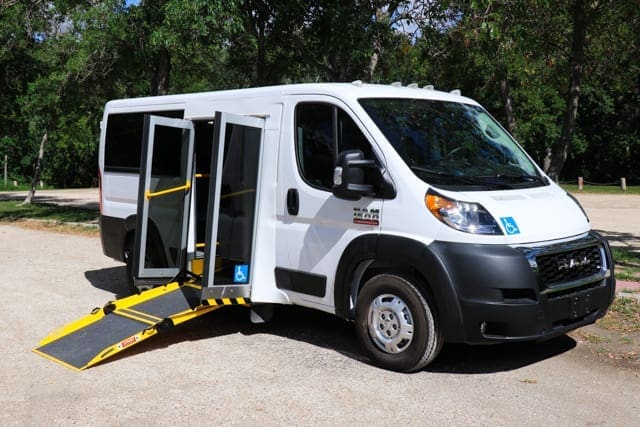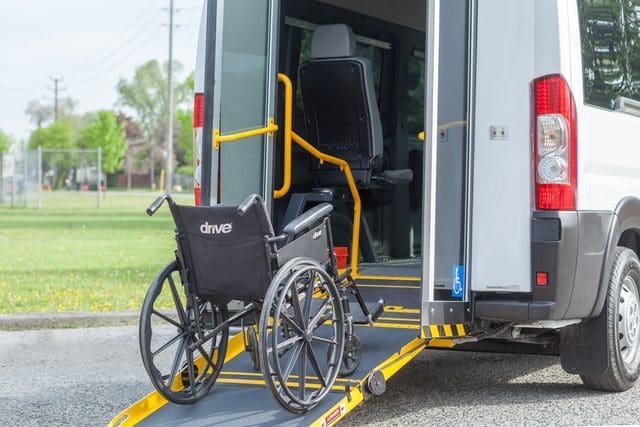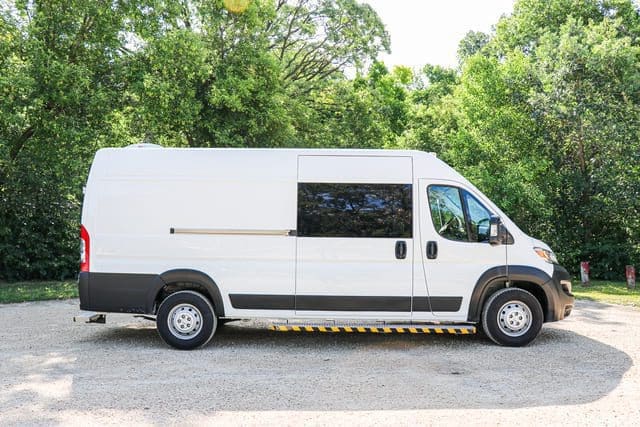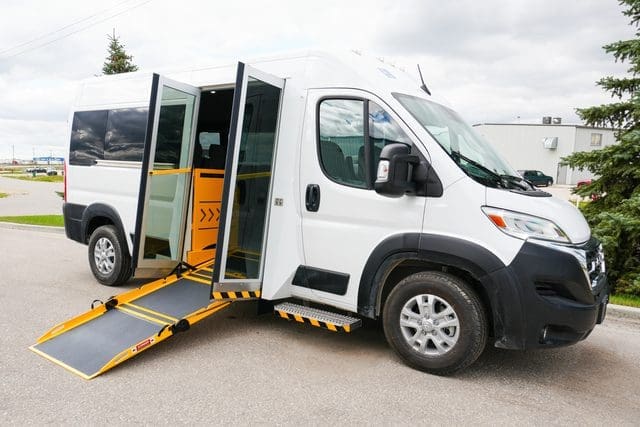Ever turn the key, hit the road, and think, “Wait, what’s that sound?” A wheelchair van that makes noise can mean something’s loose, broken, or starting to wear out. That rattle, clunk, or squeal can turn into a bigger repair or even a safety risk. In places like Winnipeg or Saskatoon, where winters hit hard, those sounds can get worse fast.
If you’re running a program that relies on your van, those strange sounds can mess with your day. It can lead to missed appointments, late pickups, and stressed-out riders. You care about the people you serve. And when the van acts up, it adds one more thing to worry about. That’s the gap we’re here to help close.
At MoveMobility, we’ve been building wheelchair accessible vans across Canada for over 20 years. We work with healthcare teams, non-profits, transportation organizations like Loft, and government programs. We take the time to understand what your community needs. Every van we build supports safety, comfort, and access. We also know there are other builders out there, and that’s okay. We’re just here to help however we can.
In this article, you’ll learn:
- Six common causes of wheelchair van noises
- What to check and where to start
- How to stop those sounds before they turn into bigger problems
Why is your wheelchair van noisy? Common causes you should know
When your wheelchair van is noisy, it’s easy to brush it off. But those sounds usually come from something trying to get your attention. And the longer you ignore it, the more likely it turns into a problem that costs you time and money, or puts someone’s safety at risk. Let’s walk through the most common causes of wheelchair van noises, starting with a sneaky one: loose plastics.
1. Loose plastics
If you hear a constant rattle or tapping sound when driving your wheelchair accessible van, loose interior or exterior plastics are often a common cause to blame. These noises usually start small but can grow louder over time, especially on bumpy roads or in cold weather.
Here’s what happens: As your van ages or goes through extreme temperature changes (hello, Alberta winters), the plastic panels inside the van can shift, warp, or crack slightly. Fasteners loosen. And suddenly, every pothole feels like a drum solo.
Where do these noises tend to come from?
- Interior trim: Wall panels, plastic molding near doors or windows, or dashboard pieces
- Ceiling panels: Especially around lighting or vents
- Wheelchair restraint areas: Plastic casing around tracks or tie-down systems
- Exterior panels: Bumper plastics or fenders can rattle, too
A bit of plastic noise might seem harmless, but it’s often a sign that something’s moving around when it shouldn’t be.
That can cause:
- Wear and tear on mounting hardware
- Vibration damage to wiring or electronics hidden behind panels
- Distraction for passengers or drivers
- A poor experience for riders who already need extra comfort
What should you do?
Look for anything that wiggles when it shouldn’t. Press on the panels gently to check for movement. You can often tighten fasteners yourself, but if it keeps coming back, it might need a more secure fix, like adding foam padding or replacing clips.
2. Poorly maintained lift
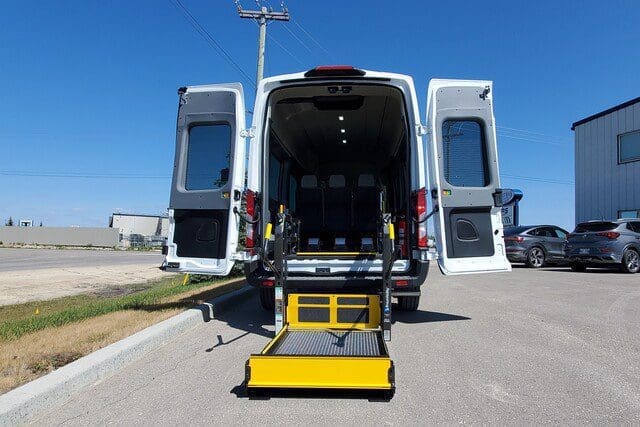
If your wheelchair van noises sound more like a haunted house than a reliable ride, your wheelchair lift might be the one crying for help. A poorly maintained wheelchair lift is another one of the most common causes of strange sounds, especially clunks, groans, grinding, or metal-on-metal scraping.
These lifts are mechanical, and like anything with moving parts, they need regular care. Without it, they can become noisy, slow, and even unsafe.
Common noises a lift makes when it’s not happy:
- Grinding: Often a sign that the gears or joints are dry
- Loud clunks or thuds: Can mean parts are loose or hitting each other
- High-pitched squeals: May point to dry pivot points or misaligned arms
- Buzzing or humming: Electrical issues or a tired motor
What causes these sounds? Over time, dirt, rust, and road salt (especially in provinces like Ontario or Quebec) sneak into the lift’s joints and bolts. Cold weather makes this worse. If you don’t clean and lubricate the lift regularly, parts begin to stick, loosen, or wear out.
A noisy lift can lead to:
- Slower loading times
- Rough movements that scare or hurt riders
- Total lift failure in the middle of a trip
- Costly repairs or replacements that could have been avoided
What should you do?
- Listen when it runs: Are the sounds smooth or struggling?
- Look for rust: Around pivot points, bolts, or the platform
- Watch the movement: If it jerks, hesitates, or drags, something’s off
If you catch these issues early, your lift will stay quiet, smooth, and safe, just the way it should be.
3. Loose wheelchair restraints
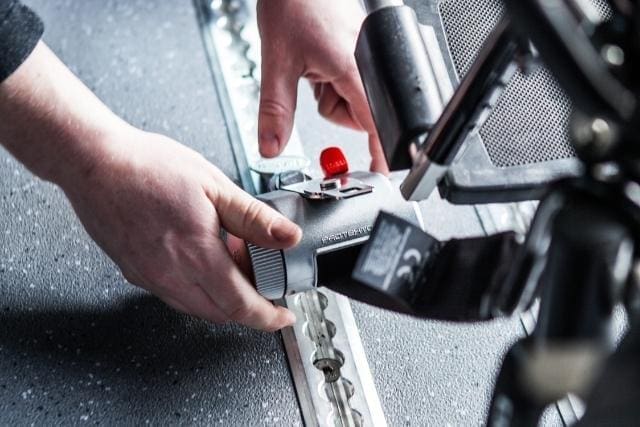
If your wheelchair van noises sound like clicking, tapping, or light rattling, especially near the floor, loose wheelchair restraints might be the culprit. These restraints are meant to hold a wheelchair in place during transport. So when they’re loose or worn out, they not only make noise, they put your riders at risk.
You might hear the sounds most when turning corners, stopping, or hitting bumps. In cities like Toronto or Vancouver, where stop-and-go traffic is constant, those little sounds can happen often and quickly become distracting or concerning for drivers and passengers.
What makes these restraints noisy?
- Loose tie-down straps: Can slap against floors or walls
- Unsecured buckles or hooks: May knock into nearby surfaces
- Worn retractors: Might not fully retract and end up dragging or dangling
- Metal-on-metal contact: Caused by clips or brackets bouncing around
Noise from restraints is more than annoying. It can be the first sign your securement system isn’t doing its job.
That could mean:
- A wheelchair shifts during transit
- Riders feel unsafe or anxious
- Drivers constantly have to check or readjust equipment
- Failing a safety inspection or audit
What should you do?
- Tug on the straps: Are they tight and secure?
- Inspect the hooks and buckles: Are they damaged, bent, or rusted?
- Listen during sharp turns or braking: If anything moves, there’s an issue
- Check retraction: If the belt doesn’t snap back, it might need servicing
Quick tip: Keep a simple checklist in the van to do a quick restraint check before the first pickup of the day. It takes 30 seconds, saves you from a noisy ride, and protects your passengers.
4. Worn suspension parts

If your wheelchair van sounds like it’s groaning every time you hit a bump or dip, worn suspension parts might be to blame. These parts help your van stay stable, smooth, and quiet, even on rough roads. But over time, they wear out, especially if your van drives over potholes, carries heavy equipment, or faces icy, uneven roads like the ones in rural Manitoba or Northern Ontario.
When parts like shocks, struts, or bushings start to fail, you’ll hear more than just noise—you’ll feel it too.
Noises to watch (or listen) for:
- Clunking: Usually when going over bumps or turning
- Squeaking or creaking: Often a sign of dry or cracked bushings
- Thudding: May come from a broken shock or loose sway bar
- Rattling: Can mean something’s come loose underneath
Why is this a big deal?
Suspension issues don’t just make the ride less comfy. They can also lead to:
- A bouncy, unstable ride
- More wear on tires and brakes
- Poor traction, especially in snow or rain
- Unsafe conditions for riders using wheelchairs
A shaky, noisy ride can make people already dealing with mobility challenges feel even more vulnerable. And if your team drives long distances, like across the Prairies or between smaller towns in Nova Scotia, the constant noise and bounce add up fast.
What should you do?
- Listen when turning or braking: Noise here can point to loose parts
- Check for uneven tire wear: A sign your shocks aren’t doing their job
- Push down on the front or back: If it bounces more than once, the shocks may be done
Fixing suspension issues early means smoother, quieter trips for everyone on board.
5. Worn brakes
If your wheelchair van makes high-pitched squeals, grinding, or a loud screech when stopping, your brakes are trying to get your attention. Worn or damaged brakes are one of the most common causes of wheelchair van noises, and one of the most important to fix right away.
Brake noise usually shows up gradually, but in high-use areas like Hamilton or Halifax, where your van might be stopping and starting all day, that wear can speed up fast.
Brake noises you shouldn’t ignore:
- Squealing: Often means the brake pads are worn down and the wear indicator is scraping
- Grinding: Can mean the pads are completely gone and the metal’s hitting metal
- Clicking: May point to loose brake parts or caliper issues
- Thumping: Could be a warped rotor or uneven wear
When your wheelchair van brakes make noise, it’s more than just annoying, it’s a safety concern.
Here’s what can happen:
- Longer stopping times: Especially dangerous in emergencies
- Uneven stops: Which can jolt riders or shift wheelchairs
- Brake failure: Leading to dangerous situations or breakdowns
- Costly repairs: Worn pads can damage rotors, calipers, and more
What should you do?
- Listen closely when braking: Does it squeal at low speeds or grind at every stop?
- Look at the brake pads: If they look thin, they probably are
- Feel the pedal: If it vibrates or feels soft, there’s a problem
- Watch for warning lights: Some vans have brake sensors built in
Keeping brakes in top shape means smoother, quieter rides and safer trips for everyone onboard.
6. Underbody rust or damage
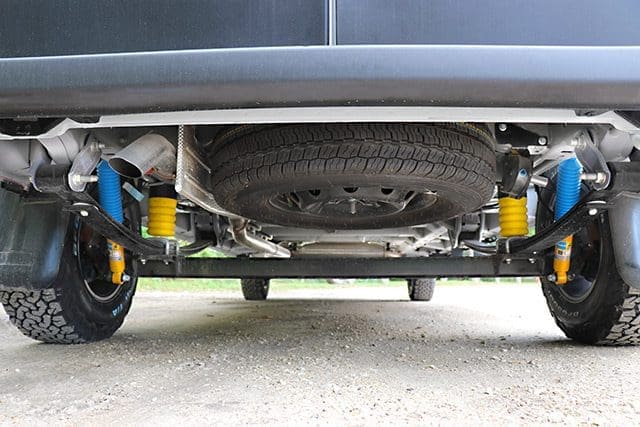
If your wheelchair van is noisy and you’ve ruled out the usual suspects, don’t forget to check underneath. Rust, cracked brackets, or loose shielding under the van can cause all kinds of clunks, rattles, or scraping sounds, especially on older or used wheelchair vans.
Canada’s climate doesn’t do your van any favours. In provinces like New Brunswick or Quebec, road salt in winter can eat away at metal parts fast. That damage hides under the vehicle, but the sounds won’t stay quiet for long.
What you might hear:
- Clanging or rattling: Loose heat shields or rusted-out brackets
- Scraping or dragging sounds: Metal parts hanging too low
- Thuds over bumps: Cracked or weakened underbody supports
Why is it important to fix this issue soon?
- Parts that break off while driving become safety hazards
- Rust can spread fast and weaken important systems
- Sounds from underneath are harder to trace but often mean trouble
- Moisture and grime can damage the wheelchair lift or floor mounts over time
What should you do?
- Heat shields: Make sure they’re tightly fastened
- Mounting brackets: Look for cracks or rust buildup
- Lift and ramp mounts: These must be solid and corrosion-free
- Loose cables or hoses: These can swing and slap around underneath
This stuff is easy to miss until it gets loud or fails. So pop your head underneath now and then, or better yet, schedule regular inspections.
Interested in wheelchair van maintenance?
If you’re growing tired of chasing down every squeak, rattle, or clunk, and you’ve tried some of the fixes we mentioned above, it might be time for a service check. Even small noises can add up to bigger problems, and sometimes the best thing you can do is bring your wheelchair accessible van in for a proper inspection.
Regular maintenance keeps things running smooth, safe, and quiet. Whether you’re operating in the busy streets of Calgary or the country roads of Prince Edward Island, a well-maintained van keeps your team moving and your passengers comfortable.
But if your used wheelchair van has seen better days, and the list of repairs keeps growing, it might be time to ask the big question: Is it worth fixing, or should we go new?
Here’s the upside to starting fresh with a new wheelchair accessible vehicle from MoveMobility:
- Peace of mind: With our strong warranty package, you don’t have to worry about strange noises or surprise fixes for a long time
- Built for your needs: Every van is designed around your riders, routes, and community
- Less downtime: A new van means fewer breakdowns and more time serving the people who count on you
So if you’re thinking it’s time for something new, or you want to chat about maintenance options, we’re here to help. Our team’s happy to talk it through, no pressure.
Let’s keep your wheels quiet and your mission moving.
Ready to resolve your wheelchair van noise?
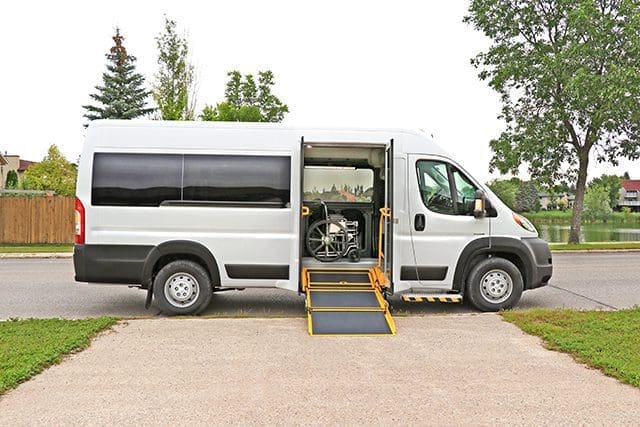
You came here because your wheelchair van is noisy, and that noise is driving you crazy. Maybe it’s rattling, clunking, or squealing, and you want to understand why before it gets worse or costs you more.
After reading this article, you’ve learned:
- The most common causes of wheelchair van noises, like loose plastics and worn brakes
- How these problems affect safety, comfort, and your daily work
- Simple checks and quick fixes to quiet those annoying sounds before they grow
At MoveMobility, we bring over 20 years of experience helping organizations all across Canada solve real-world mobility challenges. We build and maintain wheelchair accessible vans designed to fit your community’s needs and work hard to keep you moving safely and quietly. Our commitment goes beyond just making vans—we’re your partners in breaking down barriers to healthcare and transportation. If you have questions or want to explore solutions, click the button below to talk to one of our friendly mobility experts. We’re here to help you keep your mission on the move.
If you’re not ready to chat just yet, check out these helpful resources next:


